10 exercises that enhance strength and balance
By the time we reach age 30, we start to lose muscle mass — about 3% to 5% per decade — and as we get older, that loss accelerates. If we’re inactive, the loss goes even faster.
Add in worsening eyesight, along with poorer balance, strength and flexibility, and the result can take a toll on fitness and independence.
The good news is that while our bodies don’t function like they did at age 20, we can slow the muscle-loss process and improve where we are, says Joshua Rich, a senior health and wellness specialist for Symbria, a rehab and wellness organization that runs programs at the North Shore Senior Center and other locations.
“When we talk about seniors and aging, maintaining independence is so important,” Rich says. “So many times we see people lose that, along with the ability to do the things they want to do in life.”
Physical activity is one of the most universally beneficial interventions for adults over age 65, says Megan Huisingh-Scheetz, MD, MPH, associate director of the Aging Research Program and co-director of the Successful Aging and Frailty Evaluation Clinic at UChicago Medicine.
“Strength and balance exercises are critical components of physical activity for older adults,” she says. “They help maintain day-to-day independence and prevent falls.”
Rich teaches strength training and balance — both one-on-one and in classes — and recommends the following exercises. All of these can be done at home and most utilize resistance bands, which are lightweight and easy to use. As you stretch the bands, it creates increased tension in your muscles.
Use bands with handles; they are easier to use and put less pressure on your wrists. Some exercises call for hooking the bands around a fixed anchor that won’t move, such as a staircase banister or the doorknob of a closed door.
Illustrations by Chathuri Sugandhika
For strength
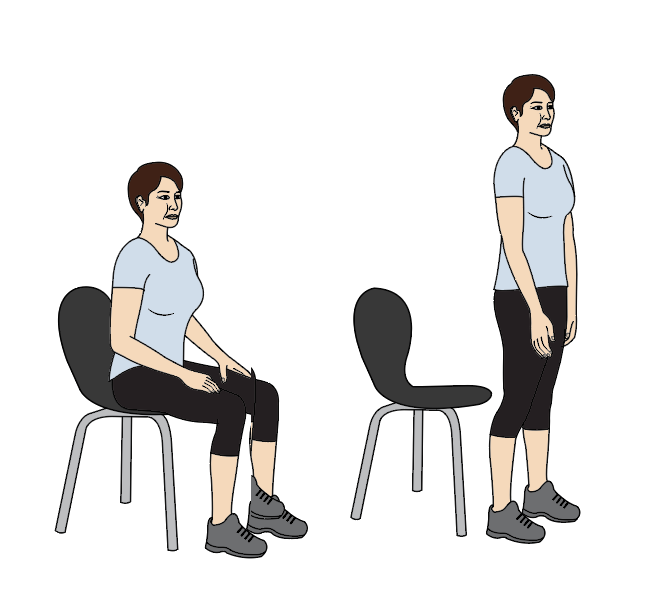
1. Sit to stand
Areas of focus: quads, hamstrings, glutes
Start seated on a chair or bench. With feet, shoulder-width apart and core engaged, lead with your chest, stand up and then slowly sit down.
Variation: Hold dumbbells to make it harder.
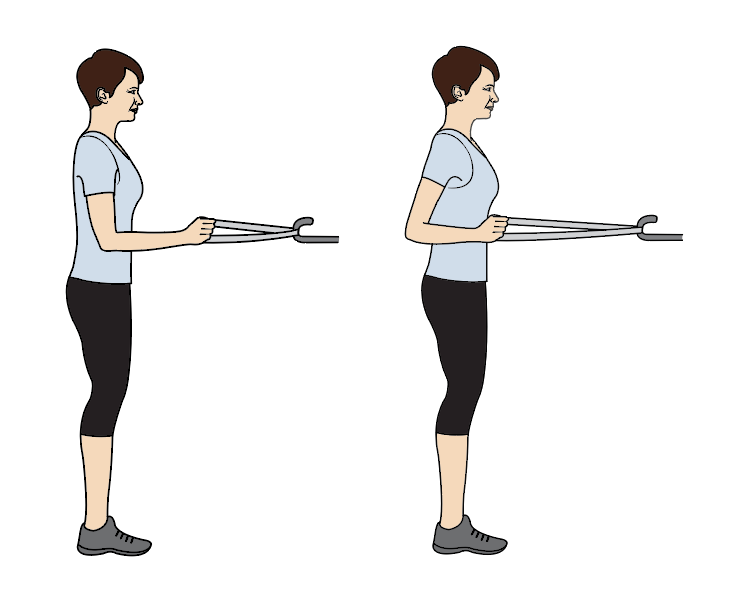
2. Back Row
Areas of focus: biceps and back
Stand with knees slightly bent. With both hands, hold on to the handles of a resistance band that’s hooked around a doorknob or an anchor that won’t move. With neutral grip, pull elbows straight back, squeezing shoulder blades together.

3. Chest press with band
Areas of focus: chest, front deltoids, triceps
Stand with your knees slightly bent in a natural step position and your core engaged. Anchor a band to a post or stationary object behind you. With a neutral grip on handles of a band, push hands forward, like a chest press.
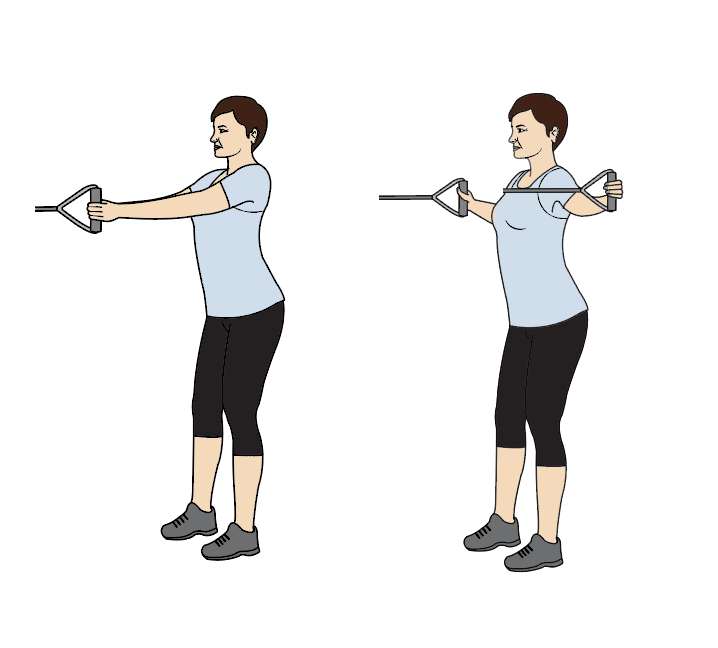
Put a band over an anchor, hold your hands out straight in front of you, grasping the handles with each hand at shoulder height. Then open your chest as you extend arms straight out to sides. This exercise helps maintain good posture.
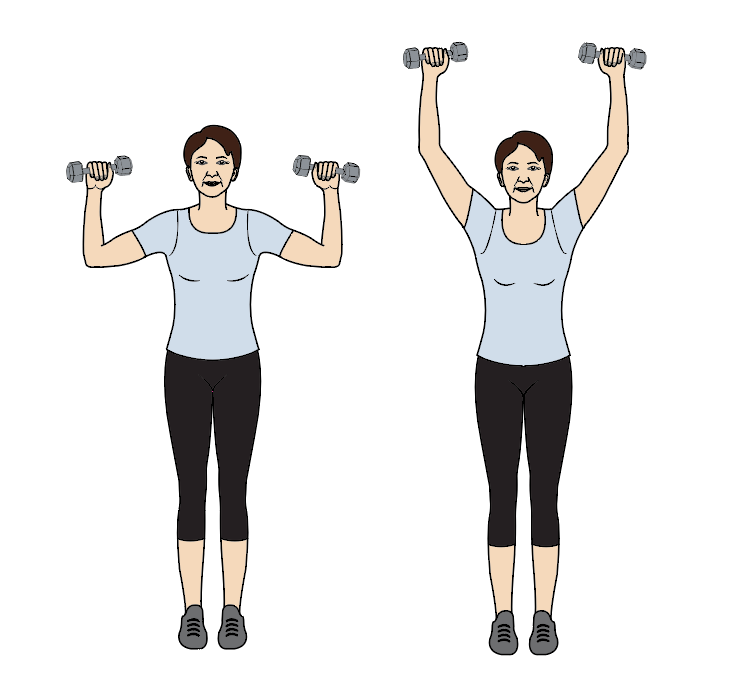
5. Overhead shoulder press
Area of focus: shoulders
Stand with knees slightly bent, core engaged. Hold dumbbells, soup cans or a band. Raise arms up overhead, keeping biceps in line with ears.
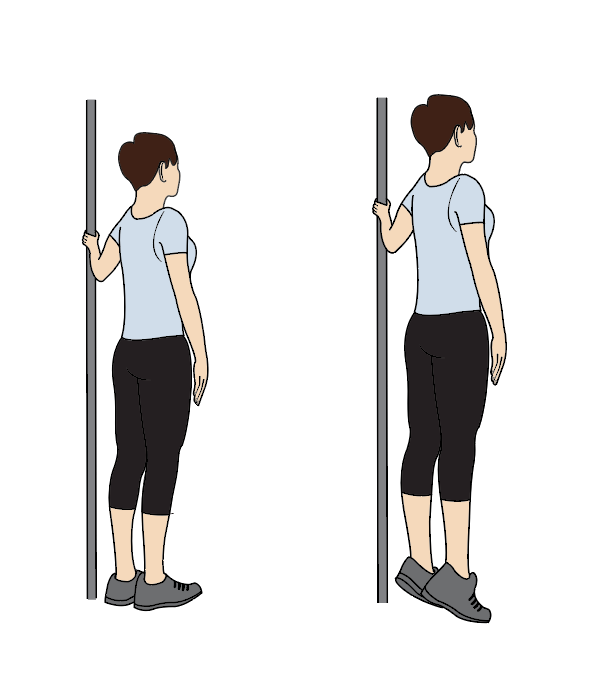
6. Calf raises
Areas of focus: shins and calves
Start with feet flat, push straight up on toes, then lower heels down. If it’s hard to balance or you can’t go up high on toes, hold on to a couch, kitchen counter or wall. Weakness in the front (shin) and back (calf) of the legs can lead to a shuffling walk, which contributes to falls.
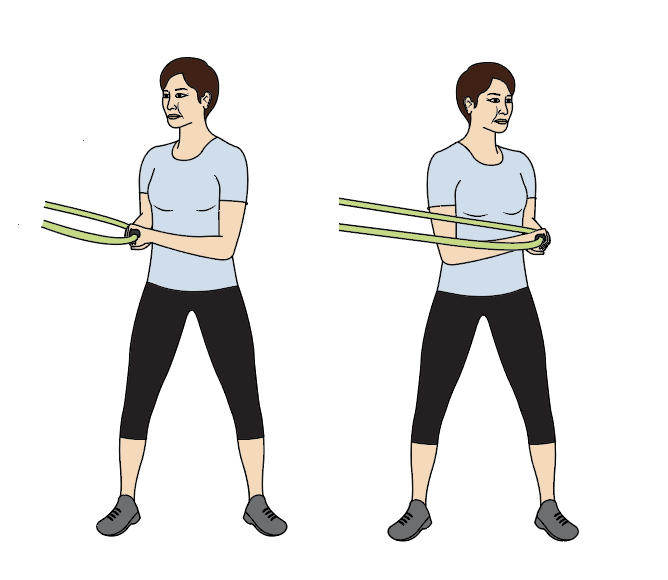
7. Woodchop
Area of focus: core
Anchor a band to something heavy and stationary at about waist level. Stand parallel to band, holding on to each handle. Turn away from anchor point, using your entire trunk/core to turn.
For Balance
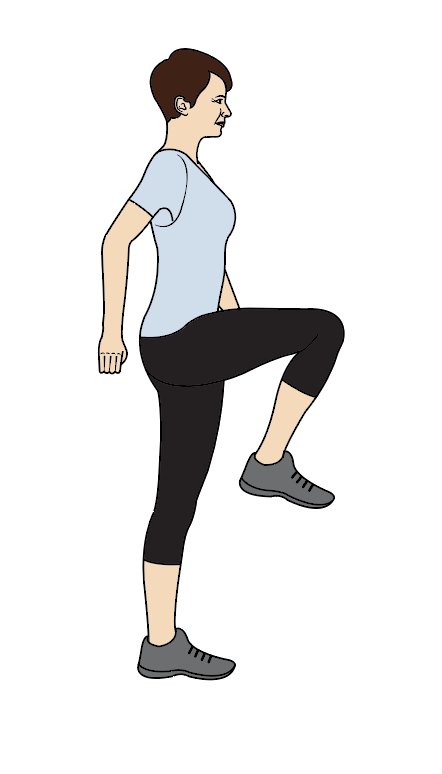
8. Stork Stand
Stand with feet shoulder-width apart. Bring one knee up, with thigh parallel to ground. Hold for 20-30 seconds, if possible. If your balance isn’t great, start with 5-10 seconds, and have a countertop nearby to hold. Make sure shoulders and hips are aligned and posture is straight. Do two sets of two for each leg.
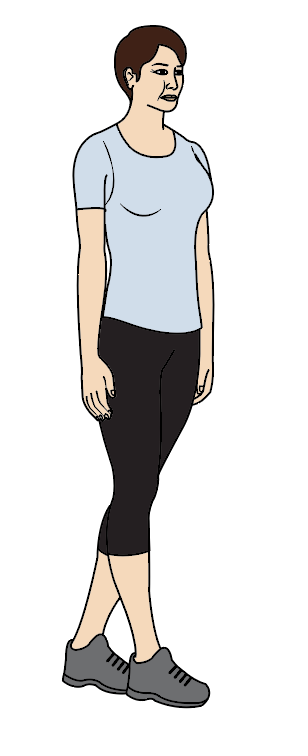
9. Heel to toe stand
Put the heel of one foot in front of the toes of the other, so feet are in line. Stand and hold 20-30 seconds, then switch. Do two sets of two for each leg.

10. Walking
Walk 10-12 steps, without looking at feet. Test inner ear balance by turning your head, looking side-to-side as you walk. Walk back and forth four times.
While doing the exercises, breathe, don’t rush, and pay attention to good form and posture. Aim for two sets of an exercise, with eight to 15 repetitions in each set.
To enhance flexibility, incorporate a basic stretch routine prior to these exercises. Do three to five flexibility stretches, holding each for up to 30 seconds.



1 Comment
[…] though walking is a straightforward form of exercise, it’s important to also work on strength and balance, as well as follow best practices for walking […]
Comments are closed.